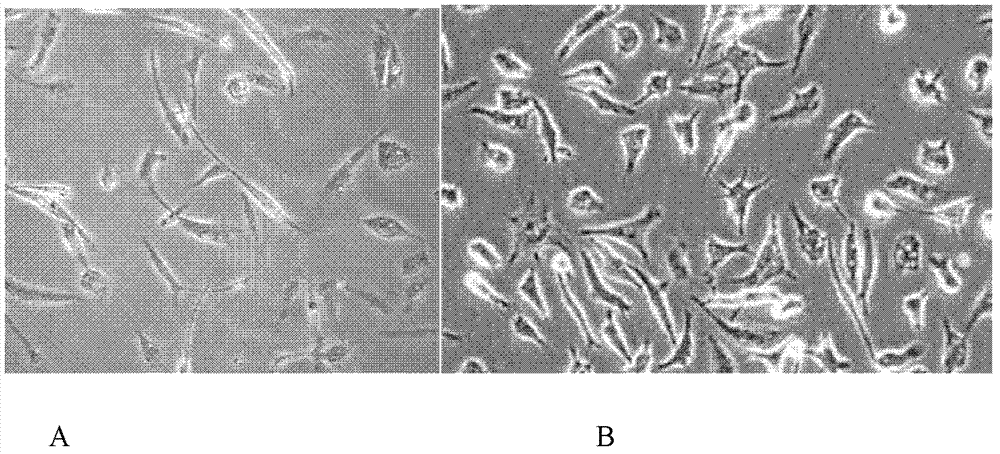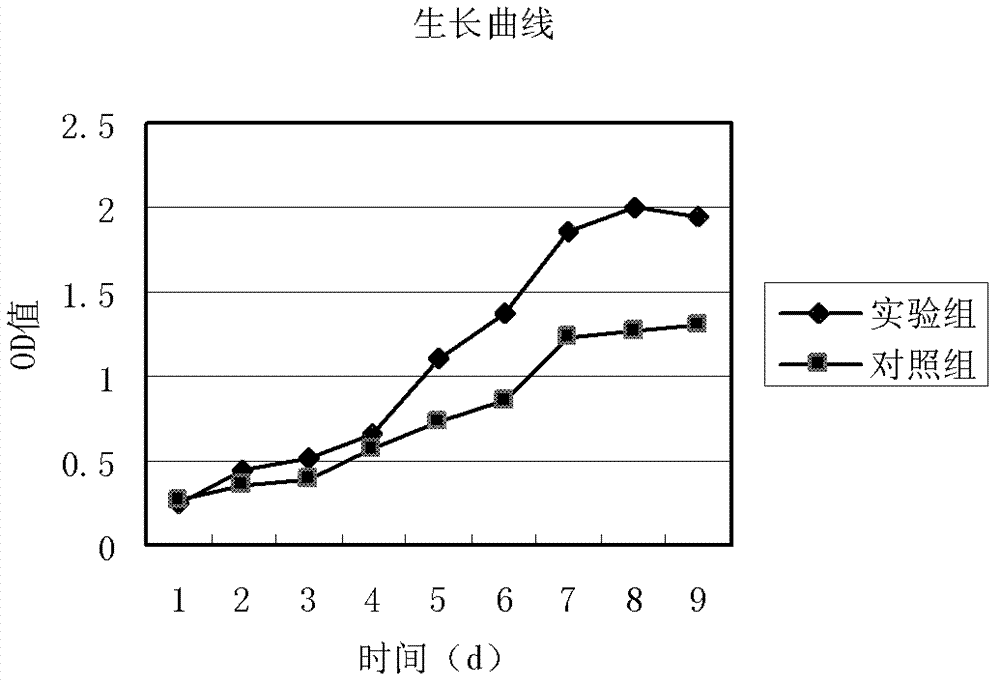Culture medium for culturing olfactory ensheathing cells
A technology of olfactory ensheathing cells and culture medium, which can be used in animal cells, nervous system cells, vertebrate cells, etc., and can solve problems such as immune response, patient exposure, and impact.
- Summary
- Abstract
- Description
- Claims
- Application Information
AI Technical Summary
Problems solved by technology
Method used
Image
Examples
Embodiment 1
[0111] Embodiment 1, the cultivation of olfactory ensheathing cells in different mediums
[0112] 1. Culture of olfactory ensheathing cells
[0113] 1) Pretreatment
[0114] The isolated human olfactory ensheathing cells (Olfactory Ensheathing Cells, OECs, described in Lim F, Martín-Bermejo MJ, García-Escudero V, Gallego-Hernández MT, García-Gómez A, Rábano A, Díaz-Nido J, Avi la J, Moreno-Flores MT. Reversibly immortalized human olfactory ensheathing glia from an elderly donor maintain neuroregenerative capacity. Glia. 2010, 58(5): 546-58. Publicly available from Beijing Qingmei Lianchuang Stem Cell Technology Co., Ltd. .) Wash, digest with trypsin solution at 37.5°C for 3 minutes, collect the cells, centrifuge, discard the supernatant, and collect the cells.
[0115] PBS washing solution, Invitrogen, catalog number 10010031;
[0116] Tryptic Digest, Invitrogen, Cat. No. 25300054.
[0117] 2) Primary culture
[0118] The cells obtained in step 1) are fully blown into a s...
Embodiment 2
[0171] Embodiment 2, the cultivation of olfactory ensheathing cells in different mediums
[0172] 1. Culture of olfactory ensheathing cells
[0173] 1) pretreatment: same as embodiment 1;
[0174] 2) Primary culture: basically the same as in Example 1, the difference is that the cell culture medium 2 is used for culturing;
[0175] 3) Subculture: basically the same as in Example 1, the difference is that the cell culture solution 2 is used for culturing;
[0176] Cell culture solution 1 was prepared according to the following steps: DMEM medium (Invitrogen, 21041025), biotin, glutamine, basic fibroblast growth factor, epidermal growth factor, insulin, selenium, human albumin, tissue Component 1, component 2, component 3, component 4, component 5, component 6 and component 7 are mixed to obtain cell culture medium 1;
[0177] The component 1 is ferric chloride, chromium chloride, cupric chloride, manganese chloride, zinc chloride and sodium molybdate;
[0178] The component...
Embodiment 3
[0224] Embodiment 3, the cultivation of olfactory ensheathing cells in different mediums
[0225] 1. Culture of olfactory ensheathing cells
[0226] 1) pretreatment: same as embodiment 1;
[0227] 2) Primary culture: basically the same as in Example 1, the difference is that the cell culture solution 3 is used for culturing;
[0228] 3) Subculture: basically the same as in Example 1, the difference is that the cell culture solution 3 is used for culturing;
[0229] Cell culture medium 3 was prepared according to the following steps: DMEM medium (Invitrogen, 21041025), biotin, glutamine, basic fibroblast growth factor, epidermal growth factor, insulin, selenium, human albumin, tissue Component 1, component 2, component 3, component 4, component 5, component 6 and component 7 are mixed to obtain cell culture medium 1;
[0230] The component 1 is ferric chloride, chromium chloride, cupric chloride, manganese chloride, zinc chloride and sodium molybdate;
[0231] The component...
PUM
 Login to View More
Login to View More Abstract
Description
Claims
Application Information
 Login to View More
Login to View More - R&D
- Intellectual Property
- Life Sciences
- Materials
- Tech Scout
- Unparalleled Data Quality
- Higher Quality Content
- 60% Fewer Hallucinations
Browse by: Latest US Patents, China's latest patents, Technical Efficacy Thesaurus, Application Domain, Technology Topic, Popular Technical Reports.
© 2025 PatSnap. All rights reserved.Legal|Privacy policy|Modern Slavery Act Transparency Statement|Sitemap|About US| Contact US: help@patsnap.com



